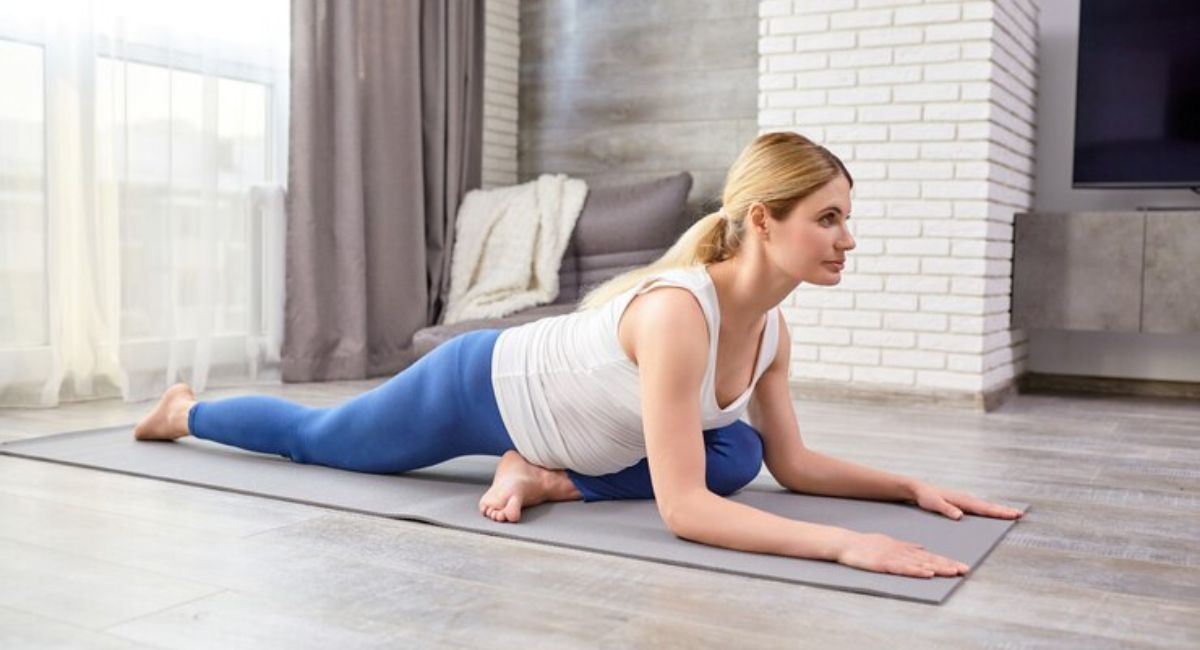Yoga is an ancient practice that harmonizes the body, mind, and spirit through postures (asanas), breathing techniques (pranayama), and meditation. Among the many asanas, Ardha Matsyendrasana (Half Lord of the Fishes Pose) is a powerful seated spinal twist that offers numerous physical and mental benefits. Named after the great yogi Matsyendra, this asana is a key posture in Hatha Yoga and is often included in intermediate yoga sequences.
In this article, we will explore:
-
The meaning and origin of Ardha Matsyendrasana
-
Step-by-step instructions to practice it correctly
-
Benefits for the body and mind
-
Precautions and contraindications
-
Variations and modifications for different levels
-
The significance of spinal twists in yoga
Meaning and Origin of Ardha Matsyendrasana
The name Ardha Matsyendrasana comes from Sanskrit:
-
Ardha = Half
-
Matsyendra = Lord of the Fishes (a revered yogi and sage)
-
Asana = Pose
This pose is named after Yogi Matsyendranath, a legendary figure in yoga tradition and one of the founders of Hatha Yoga. According to mythology, Matsyendranath was born under miraculous circumstances and later became a disciple of Lord Shiva. He is often depicted in a deep twist, symbolizing wisdom and spiritual awakening.
The “half” variation (Ardha Matsyendrasana) is a simplified version of the full Matsyendrasana, making it accessible to more practitioners.
Step-by-Step Instructions to Practice Ardha Matsyendrasana
Preparatory Poses
Before attempting Ardha Matsyendrasana, warm up with:
-
Sukhasana (Easy Pose)
-
Marjaryasana-Bitilasana (Cat-Cow Stretch)
-
Supta Matsyendrasana (Supine Spinal Twist)
Steps to Perform Ardha Matsyendrasana
-
Starting Position:
-
Sit on the floor with legs extended straight in Dandasana (Staff Pose).
-
Bend your knees and place your feet flat on the floor.
-
-
Positioning the Legs:
-
Slide your left foot under your right leg, placing it beside your right hip.
-
Cross your right leg over the left, placing the right foot flat on the floor outside the left knee.
-
-
Twisting the Torso:
-
Inhale and lengthen your spine.
-
Exhale and twist your torso to the right, bringing your left elbow to the outside of the right knee.
-
Place your right hand behind you for support.
-
-
Deepening the Twist:
-
Press your elbow against the knee to deepen the twist.
-
Keep your spine elongated and shoulders relaxed.
-
Gaze over your right shoulder.
-
-
Holding the Pose:
-
Hold for 30 seconds to 1 minute, breathing deeply.
-
With each exhale, gently deepen the twist.
-
-
Releasing the Pose:
-
Inhale and slowly release the twist.
-
Repeat on the opposite side.
-
Benefits of Ardha Matsyendrasana
Physical Benefits
-
Improves Spinal Flexibility:
-
The twisting motion enhances mobility in the spine, reducing stiffness.
-
-
Stimulates Digestion:
-
The compression and release of abdominal organs aid digestion and detoxification.
-
-
Enhances Blood Circulation:
-
Twists help improve circulation to spinal nerves and internal organs.
-
-
Relieves Back Pain:
-
Stretches and strengthens the back muscles, alleviating discomfort.
-
-
Opens the Hips and Shoulders:
-
The pose releases tension in the hips and shoulders, improving posture.
-
Mental and Energetic Benefits
-
Calms the Mind:
-
The rhythmic breathing in the pose reduces stress and anxiety.
-
-
Balances Energy (Prana):
-
Twists are believed to cleanse the nadis (energy channels) and activate the Manipura Chakra (solar plexus).
-
-
Enhances Focus:
-
The meditative aspect of the pose improves concentration.
-
Precautions and Contraindications
While Ardha Matsyendrasana is beneficial, certain conditions require caution:
-
Spinal or disc injuries – Avoid deep twists.
-
Pregnancy – Modify or skip the pose (consult a yoga therapist).
-
Severe arthritis – Use props for support.
-
Recent abdominal surgery – Practice gentle twists only.
Tip: Always warm up before attempting deep twists to prevent strain.
Variations and Modifications
For Beginners:
-
Sit on a folded blanket to elevate the hips.
-
Use a strap around the bent knee to assist the twist.
-
Keep the bottom leg extended if crossing is difficult.
For Advanced Practitioners:
-
Try Full Matsyendrasana (deeper twist with a bind).
-
Lift the sitting bones slightly to deepen the spinal rotation.
The Significance of Spinal Twists in Yoga
Twisting poses like Ardha Matsyendrasana play a crucial role in yoga:
-
Detoxification: Twists wring out toxins from internal organs.
-
Spinal Health: Maintains vertebral alignment and flexibility.
-
Energetic Cleansing: Helps release blocked energy in the spine.
Conclusion
Ardha Matsyendrasana is a transformative pose that enhances physical flexibility, digestion, and mental clarity. By practicing it mindfully, one can experience its profound benefits while honoring the ancient wisdom of yoga. Whether you’re a beginner or an advanced yogi, incorporating this twist into your routine can lead to greater balance and well-being.










